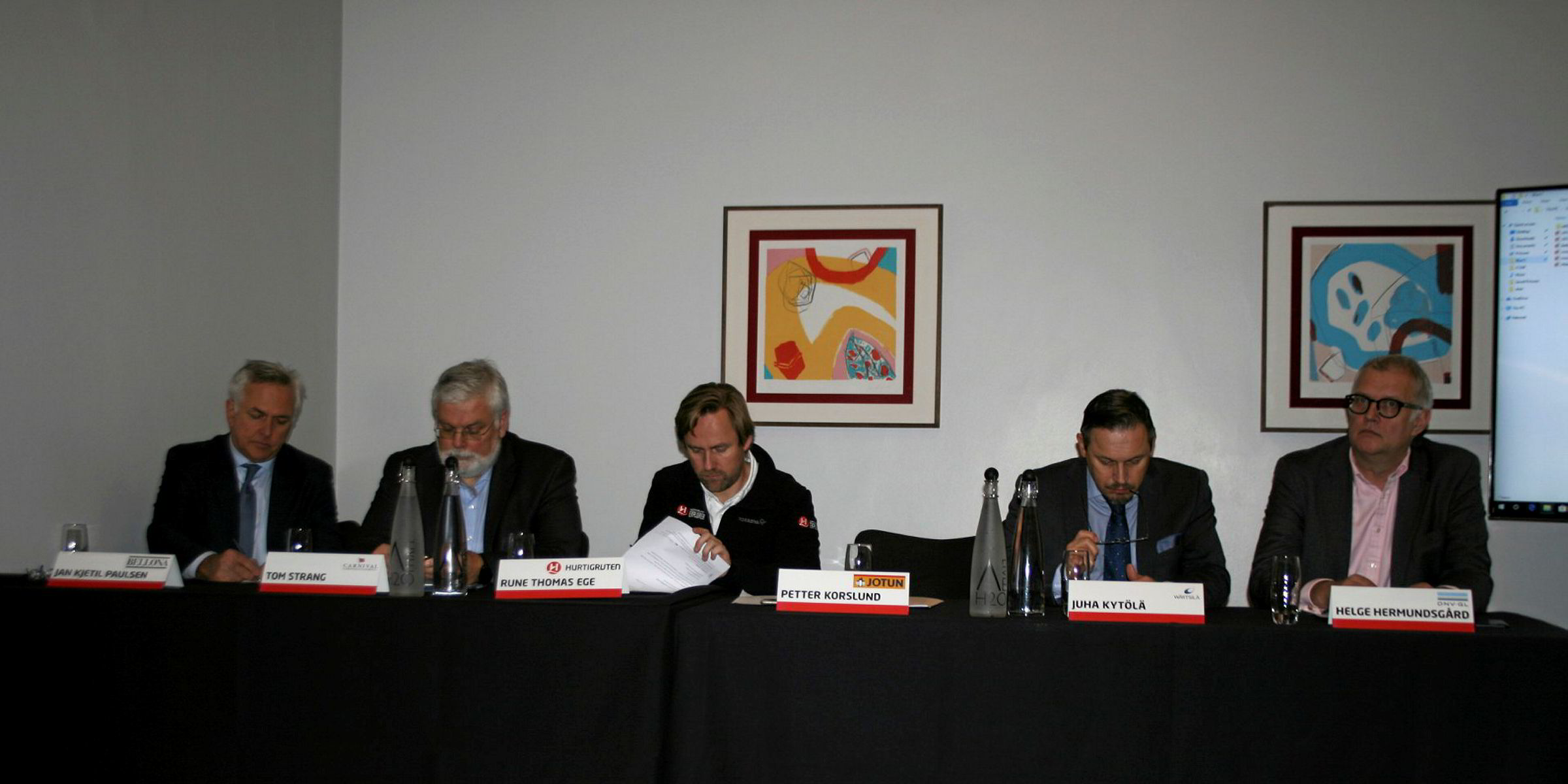Tom Strang, Carnival Corp’s senior vice president of maritime affairs, says while no available single technology can solve greenhouse gas emissions, the cruise giant’s investment in seven LNG-fuelled newbuildings took it a long way towards fulfilling its emissions-reduction ambitions.
“Simply put, it [LNG] has the best emissions profile of any fossil fuels,” Strang says. "The investment we make on an annual basis into R&D [research and development] and new technology is significant.”
He adds that CMA CGM’s decision to adopt LNG fuelling for its nine large containership newbuildings in China is a “big step change in world shipping”.
"We see LNG as a step on the pathway to zero emissions in the future," he says. "That is where we want to be. It is a long pathway, it is a long-term vision, it is aspirational, but that is how we have to look at it.
"The technology you have on an expedition ship and on a large cruiseship will be different. Getting LNG, for example, inside a small ship is not easy. LNG takes up more space and that space has revenue-earning potential.
Strang says Carnival has already achieved 28% fuel efficiency by various means and has installed 161 exhaust gas cleaning systems certified for use on 64 of its 103 ships.
As well as exploring the potential of fuel cells, it is working with regulators and communities to ensure water that enters the oceans is clean.
”We have seen a lot of interest or renewal of interest in cold ironing as well, particularly in the northern Scandinavian ports around the Baltic,” Strang says. “We need to have destinations that are clean and where people are happy to receive us.”
Juha Kytola says Wartsila is adopting a holistic “smart marine strategy” focusing on how it can further support the shipping industry to improve efficiency, emissions and reduce waste.
The environmental impact can be reduced by better integration of products on ships, while artificial intelligence might benefit decision-making onboard.
On the LNG lower-emissions front, Wartsila is involved in the construction of receiving and storage terminals, liquefaction and gasification plants, “to make it happen”, Kytola says.
Fuel cells are also potentially a part of the solution, as is hydrogen as a fuel.
Helge Hermundsgard, DNV GL Maritime’s business development manager, congratulates the cruise industry for its environmental focus but adds that while “LNG is a good step forward, it isn’t close to neutral”.
”Batteries are a good solution for peak shaving... but to put batteries on the last AIDA ship, you wouldn’t have cabins left for passengers. They take too much space.
“So, basically, there is no silver bullet. But the industry is exploring the different alternatives.”
Jan Kjetil Paulsen of environmental pressure group Bellona says the problem is that the cruise industry is growing much faster than engineers are able to reduce specific emissions.



